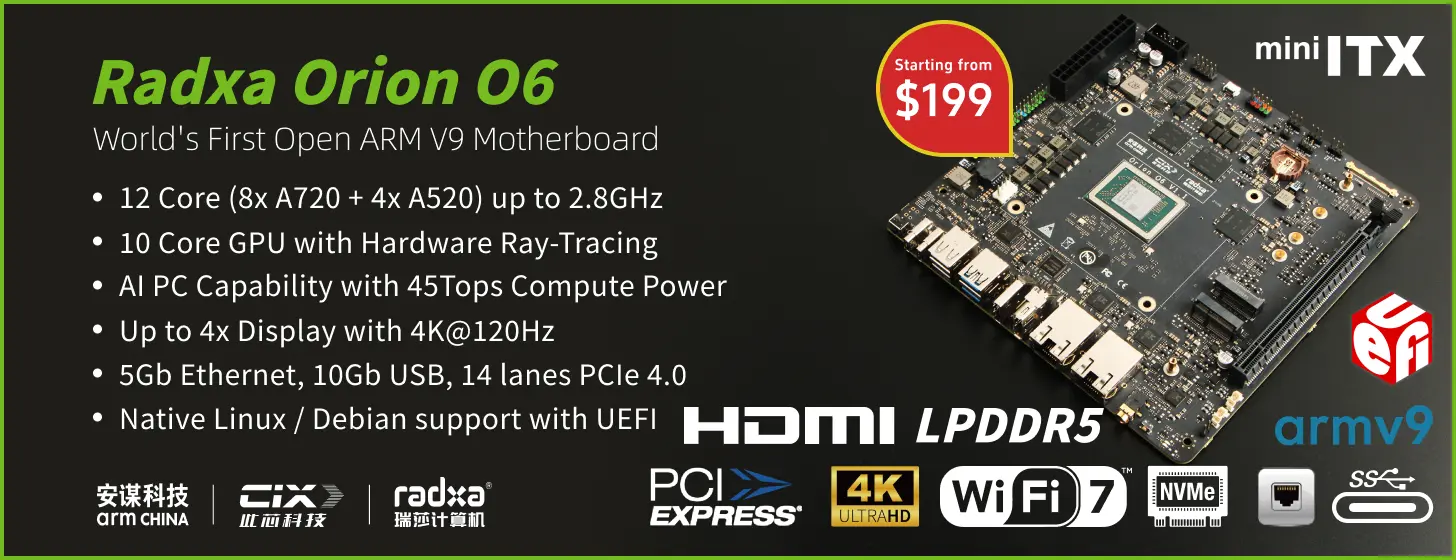Zidoo X9S is the first Android TV box based on Realtek RTD1295 quad core Cortex A53 processor that I’ve received for review. So in this post, I’ll show some system information with CPU-Z, and Android & OpenWrt Settings, and run typical Android benchmarks such as Antutu 6.x, Vellamo, and 3Dmark.
Zidoo X9S / Realtek RTD1295 Android System Info
CPU-Z detects Realtek RTD1295 is a quad core ARM Cortex A53 processor clocked between 600 MHz and 1.4 GHz with an ARM Mali-T820 GPU, and uses an unknown governor… But in adb shell, tje command “cat /sys/devices/system/cpu/cpu0/cpufreq/scaling_governor” reports an ondemand governor is used.
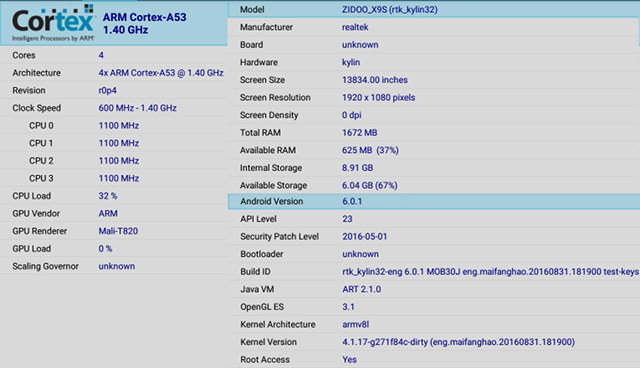
The system runs Android 6.0.1 on top of Linux 4.1.17 (I think it’s the first time I see a Linux 4.x kernel used in a TV box…), and with 1920×1080 resolution. Total RAM is shown to be 1672 MB, most probably because some RAM is reserved for the GPU and VPU out of the 2GB RAM. There’s only 8.91 GB internal storage out of the 16GB eMMC flash, which is quite lower than on other TV boxes, but there’s at least one reason for this: OpenWrt is also running in the box. Zidoo however told they plan to optimize this in order to offer more space to the user.
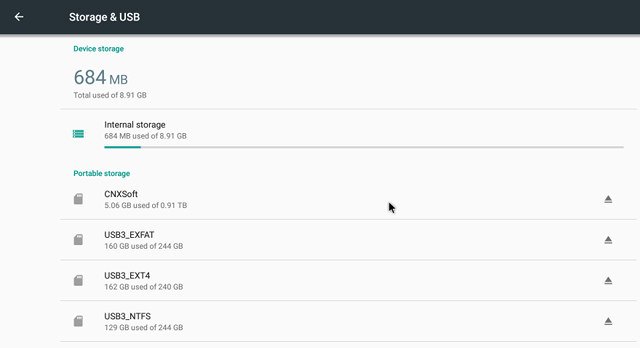 Another interesting aspect of Realtek RTD1195 is support for USB 3.0 and SATA storage, and with the 12V/3A power supply that comes with the box, I could connect both a USB 3.0 hard drive to the USB 3.0 port, and a SATA drive (CNXSoft shown above) to the external port. My USB 3.0 drive has 4 partitions, and with the exception of BTRFS, all other file systems could be mounted: NTFS, exFAT, and EXT-4. NTFS is implemented with Paragon NTFS, a commercial implementation, which usually delivers much better performance than NTFS-3G.
Another interesting aspect of Realtek RTD1195 is support for USB 3.0 and SATA storage, and with the 12V/3A power supply that comes with the box, I could connect both a USB 3.0 hard drive to the USB 3.0 port, and a SATA drive (CNXSoft shown above) to the external port. My USB 3.0 drive has 4 partitions, and with the exception of BTRFS, all other file systems could be mounted: NTFS, exFAT, and EXT-4. NTFS is implemented with Paragon NTFS, a commercial implementation, which usually delivers much better performance than NTFS-3G.
Zidoo X9S / Realtek RTD1295 OpenWrt System Info
So let’s have a look at OpenWrt. First I can see some OpenWrt process within Android using adb shell:
|
1 2 |
oot@kylin32:/ # ps | grep -i openwrt u0_a55534 5354 1438 3100 436 poll_sched ffffffff S avahi-daemon: running [OpenWrt-2.local] |
and I also scan Zidoo X9S IP address from my Ubuntu machine to discover a few oen ports:
|
1 2 3 4 5 6 7 8 9 10 11 12 13 14 15 |
sudo nmap -sS 192.168.0.113 Starting Nmap 7.01 ( https://nmap.org ) at 2016-09-09 16:33 ICT Nmap scan report for 192.168.0.113 (192.168.0.113) Host is up (0.0030s latency). Not shown: 993 closed ports PORT STATE SERVICE 22/tcp open ssh 23/tcp open telnet 80/tcp open http 139/tcp open netbios-ssn 445/tcp open microsoft-ds 5555/tcp open freeciv 7100/tcp open font-service MAC Address: 9C:44:3D:46:32:4E (Chengdu Xuguang Technology) |
So there are port SSH and HTTP ports running, but you can’t access SSH just yet, as you need to set the root password first. To do, you can access the configuration page from Zidoo (http://127.0.0.1), or any browser on your LAN (http://[ZIDOO-X9S IP address]). 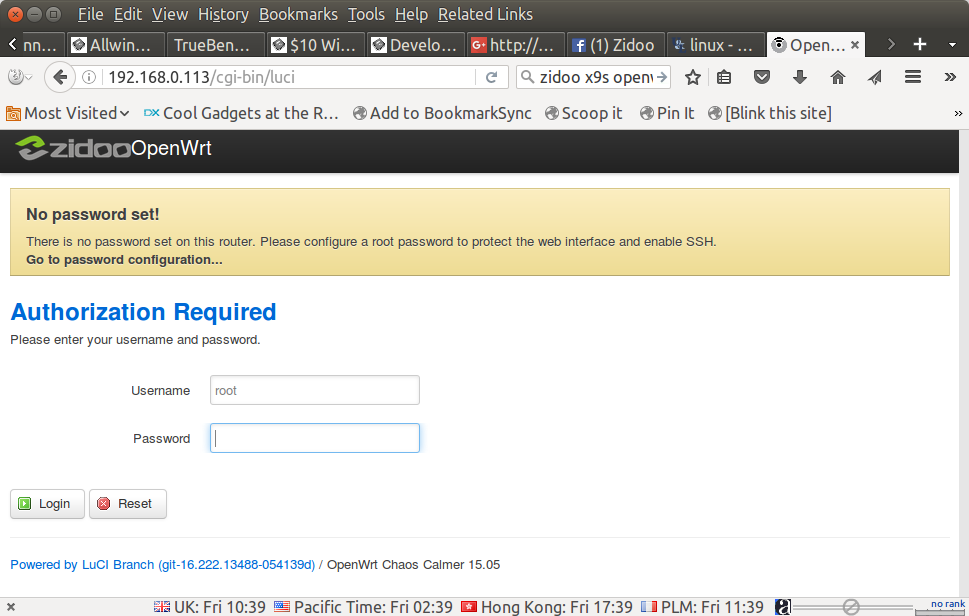 It should redirect you to LuCI interface, and you can login with no root password. There’s a security issue here, as your personal files may be exposed if you forget to set the root password, or to disable OpenWrt if you don’t need it.
It should redirect you to LuCI interface, and you can login with no root password. There’s a security issue here, as your personal files may be exposed if you forget to set the root password, or to disable OpenWrt if you don’t need it.
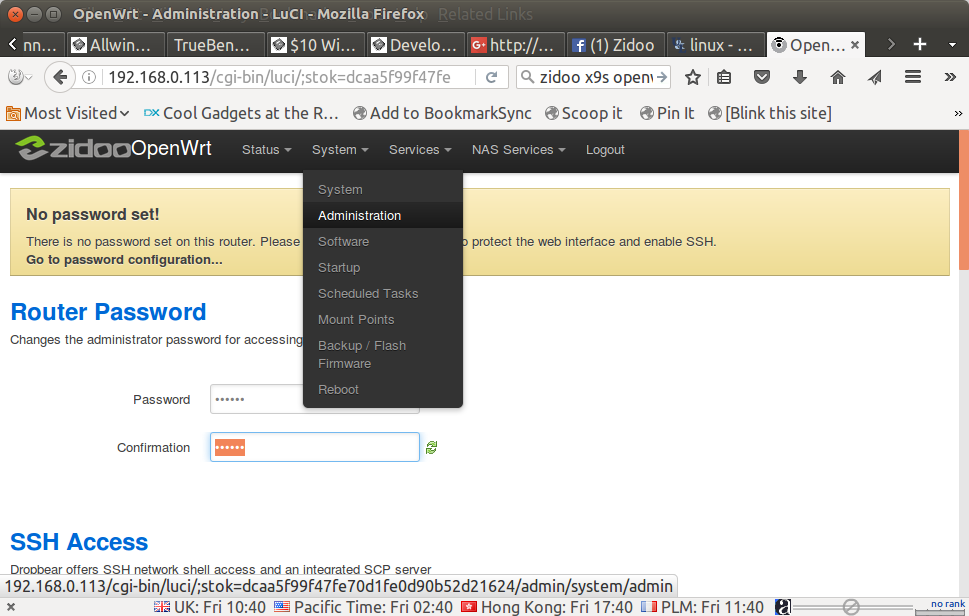 In order to set the root password, go to System->Administration input your password, and click on Save & Apply.
In order to set the root password, go to System->Administration input your password, and click on Save & Apply.
Now that we have configured the system, we can check the status, and see that it’s running OpenWrt Chaos Calmer 15.04.
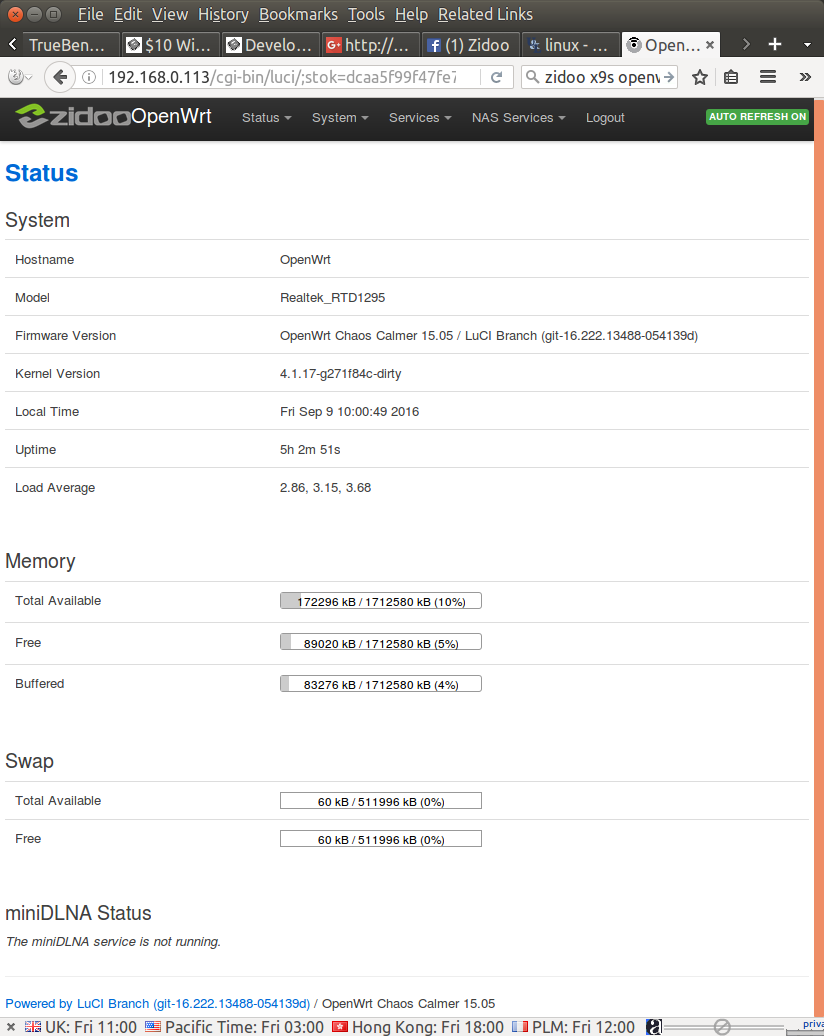
You can also enable/disable some OpenWrt services within Android itself by going to Settings->More->Openwrt Settings.
Zidoo X9S / Realtek RTD1295 Benchmarks
Zidoo X9S got 34,973 points in Antutu 6.x, in the expected range for a quad core Cortex A53 processor @ 1.4 GHz. The result is a little lower than Antutu 6.x for Amlogic S905 processor @ 1.5 Ghz.
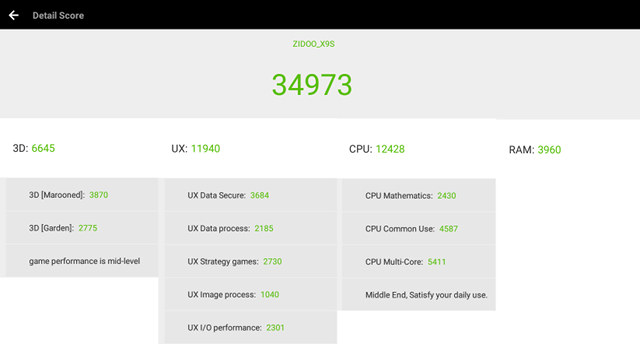
The 3D score is quite faster thanks to the Mali-T820MP GPU, but UX, CPU and RAM scores are lower.
Moving on to Vellamo, Zidoo X9S got 1,457 for Multicore, 831 for Metal, and 2,638 for Browser using Chrome (the stock browser is not an option in X9S firmware). This compares to 1,589 for Multicore and 1,235 for Metal achieved by MINIX NEO U1 TV box based on Amlogic S905 SoC. The browser score for the latter (2,157 points) is not directly comparable since it was done with the stock Browser, not Chrome.
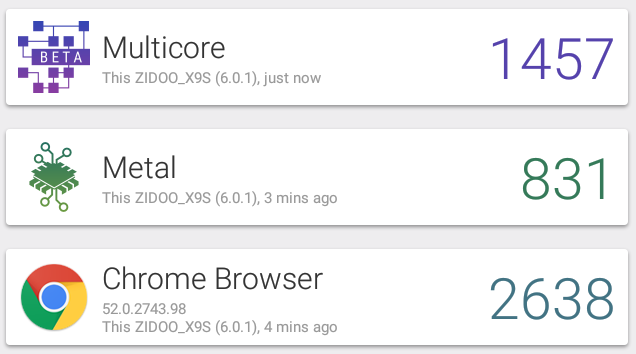
Finally, I’ve tested 3D graphics performance again using 3D Ice Storm Extreme 1.2.
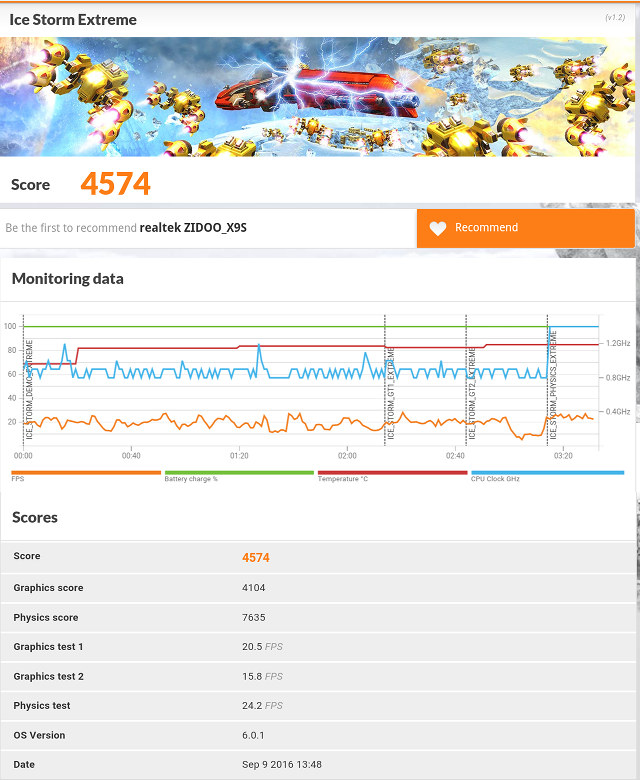
The total score (4,574 points) is surprisingly only slightly higher than on Amlogic S905 with Mali-450MP GPU (4,327), and significantly lower than on Amlogic S912 with ARM Mali-T820MP3 (5,752), which is supposed to have the same GPU as Realtek RTD1295, maybe it’s clocked lower on the latter, or RAM performance has an impact on the score. Zidoo X9S does not come with any heatsink on the processor, but instead a metal shield covered with “graphite nano thermo material”, so it might be a cooling issue too.

Jean-Luc started CNX Software in 2010 as a part-time endeavor, before quitting his job as a software engineering manager, and starting to write daily news, and reviews full time later in 2011.
Support CNX Software! Donate via cryptocurrencies, become a Patron on Patreon, or purchase goods on Amazon or Aliexpress


